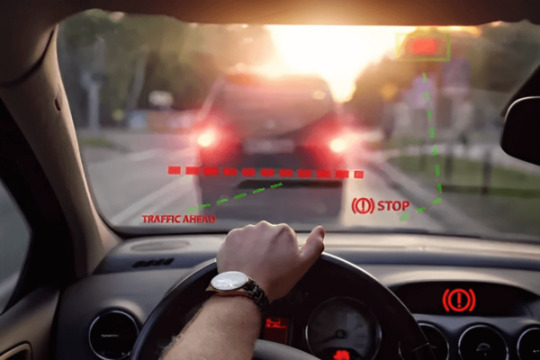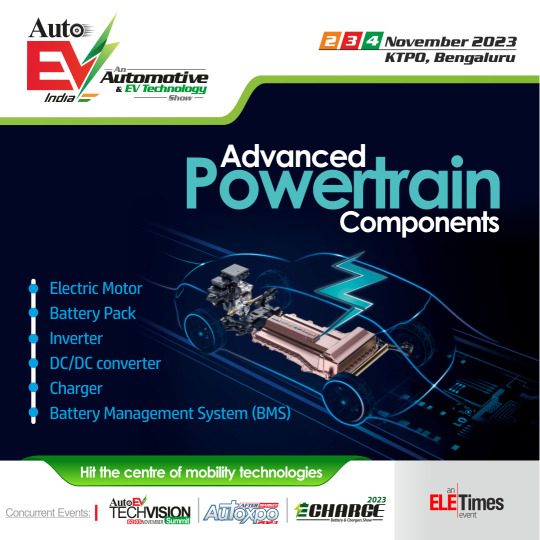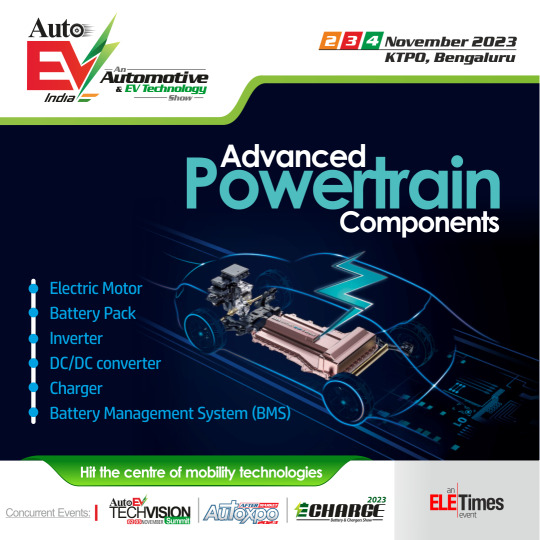#BatteryManagementSystem
Text
#Mouser Electronics#eBook#BatteryManagementSolutions#BatteryManagementSystem#electronicsnews#technologynews#Vishay
0 notes
Text
Electric Vehicle Battery Market Solid Analyzed Segmentation, Demand, and Share Estimation by 2030

The qualitative report published by Exactitude Consultancy research on the “Electric Vehicle Battery Market offers an in-depth examination of the current trends, latest expansions, conditions, market size, various drivers, limitations, and key players along with their profile details. The Electric Vehicle Battery market report offers the historical data for 2018 to 2023 and also makes available the forecast data from the year 2024 to 2030 which is based on revenue. With the help of all this information research report helps the Market contributors to expand their market positions. With the benefit of all these explanations, this market research report recommends a business strategy for present market participants to strengthen their role in the market. This report analyzes the impact of the Covid 19 pandemic on the Electric Vehicle Battery Market from a Global and Regional perspective.
The global electric vehicle battery market is expected to grow at 21% CAGR from 2024 to 2030. It is expected to reach above USD 95 billion by 2030 from USD 17 billion in 2023.
For The Full Report Click here:
https://exactitudeconsultancy.com/reports/1879/electric-vehicle-battery-market/
#ElectricVehicleBattery#EVBattery#BatteryTechnology#BatteryMarket#ElectricVehicle#EVMarket#LithiumIonBattery#BatteryInnovation#BatterySupplyChain#BatteryManufacturing#EVIndustry#CleanEnergy#RenewableEnergy#SustainableMobility#FutureOfMobility#GreenTechnology#ElectricCars#EVCharging#BatteryManagementSystem
0 notes
Text
🔥Battery Management Systems - Welding for Unbreakable Power! ⚡💪 Don't miss this game-changer that'll make your battery last longer than ever before! Say goodbye to tedious maintenance. 🔧🔋 #BatteryManagementSystem #Innovation #UnbreakablePower
#lithiumbattery#lithiumbatterypack#lithiumbatteryfactory#lifepo4lithiumbattery#daxingpower#newenergy#batterymanagementsystem#soldering#powersupply
0 notes
Text

Introducing our NEW 200AH Slim Lithium Battery 12v. #BSLBATT#LiFePO4 Battery is supplied fully protected by a sophisticated specially designed lithium battery management system (BMS) that constantly monitors every cell to ensure the battery is always optimized for the best performance and life.
Slim #Lithium Battery 12v li ion battery pack is safer, lighter, and more powerful with long service and shelf life compared to all traditional lead-acid batteries.
No changing of systems, equipment, or extensive re-wiring is required. You simply pull your old heavy batteries out (if your back allows it) and put the new lightweight LiFePO4 battery in. It's as easy as that.
This 200AH Slim Lithium Battery 12v is the perfect drop-in upgrade for your existing old and heavy batteries, Invest in this sealed, maintenance-free battery for your #energy storage off-grid system today!
#SlimLithiumBattery#LiFePO4Battery#BatteryManagementSystem#LongServiceLife#LightweightBattery#DropInUpgrade#EnergyStorage#OffGridSystem#SealedBattery#MaintenanceFree#200AHSlimLithiumBattery12v#SlimLithiumBattery12v
0 notes
Text
Bliss Flow Systems series is a self contained electro hydraulic actuator suitable for linear and rotary applications. It can be customized to suit a given application. EHF series of actuator has an integral electronic control module which drives the electrical motor, pump and solenoid for operations. control module which drives the electrical motor, pump and solenoid for operations. With the combination of modern electronics and power of hydraulics, Bliss Flow Systems series is super efficient in providing precise control for high cyclic demand or ESD application.
1 note
·
View note
Text
ADAS Testing and Validation: Ensuring Safe and Reliable Advanced Driver Assistance Systems
Introduction
The car industry has undergone a transformation thanks to Advanced Driver Assistance Systems (ADAS), bringing us closer to a time when driving is entirely automated. These innovative technologies increase vehicle security, increase driving comfort, and lessen the possibility of collisions. Deploying ADAS, however, entails a great deal of responsibility because any flaws or failures in these systems could have negative effects.
In order to guarantee the secure and dependable operation of these cutting-edge technologies, this blog explores the critical facets of ADAS testing and validation.
1. The Value of ADAS Testing and Validation

Testing and validation for ADAS have the following objectives:
Safety Assurance: The main goal is to ensure that ADAS features operate correctly and safely under various circumstances. This reduces the possibility of mishaps brought on by system errors or misunderstandings.
Performance Evaluation: ADAS assists in determining the accuracy and dependability of ADAS features in a variety of driving circumstances, including city streets, highways, and inclement weather.
Regulatory Compliance: Validation is a necessary step for legal compliance because ADAS must adhere to strict safety standards established by regulatory agencies.
User Experience: To guarantee a seamless and simple experience for drivers, validation also includes assessing the usability and human-machine interface components of ADAS.
2. ADAS Testing Types
Hardware-in-the-Loop (HIL) testing connects actual ADAS hardware (such as sensors and ECUs) to a computerized driving simulation environment. This method prevents potential dangers from being placed on real automobiles or drivers while enabling controlled and repeatable testing of ADAS algorithms and features.
Software-in-the-Loop (SIL) ADAS: Using a simulated environment instead of actual hardware, SIL testing entails assessing ADAS software algorithms. It enables early-stage ADAS software validation and debugging, saving time and resources throughout the development process.
Vehicle Testing: To evaluate ADAS performance under various driving circumstances, real-world vehicle testing is crucial. Testing on public roadways (with the required safety procedures), and designated proving grounds are examples of this.
Simulation Testing: Through virtual simulations, ADAS systems can be tested in a variety of situations, including risky or uncommon incidents that could be difficult to simulate in actual testing. Additionally, simulations offer a quick and inexpensive way to validate ADAS systems.
Data-Driven ADAS: ADAS makes extensive use of data collected by cameras and sensors. Data-driven testing involves validating and optimizing ADAS algorithms utilizing recorded data from real-world driving scenarios.
3. ADAS Validation Challenges
The testing and validation phase of ADAS technology faces a number of difficulties notwithstanding their benefits:
Edge Cases: ADAS must be tested against unusual and extreme events that are not typically seen in real-world driving. To guarantee the system’s reliability and resilience, these “edge cases” are essential.
Sensor Calibration: Accurate data gathering depends on precise sensor calibration. For ADAS validation to be successful, sensors must be calibrated accurately to prevent false positives or negatives.
Interoperability: A variety of ADAS elements from various providers are combined in many automobiles. For these systems to integrate seamlessly and avoid conflicts, interoperability must be maintained.
Human Factor: ADAS technology interacts with human drivers through the human factor. Enhancing user acceptance and safety through ADAS validation requires an understanding of and attention to the human component.
Continuous Updates: To respond to new driving situations and arising difficulties, ADAS systems need to be updated on a regular basis. To maintain optimal performance, it is vital to make sure that validation and updates are ongoing.

4. Regulatory and Testing Standards for ADAS
The testing and validation of ADAS are governed by a number of international standards and laws, which the car industry complies with. Among the fundamental standards are:
ISO 26262: Throughout the development lifecycle, this standard establishes the functional safety criteria for automotive systems, including ADAS.
Euro NCAP: The European New Car Assessment Programme (Euro NCAP) evaluates the safety of vehicles and conducts tests to determine how well ADAS systems function.
NHTSA Guidelines: In the United States, the National Highway Traffic Safety Administration (NHTSA) offers recommendations for ADAS validation and testing.
SAE J3016: This standard provides a framework for categorizing ADAS and establishes levels of driving automation from Level 0 (no automation) to Level 5 (full automation).
5. ADAS Testing and Validation Future Trends
The testing and validation procedures will change as ADAS technologies advance. Future trends could include:
Testing of artificial intelligence (AI): As AI is incorporated into ADAS systems, testing techniques utilizing AI-driven simulations and adversarial testing will proliferate.
Real-world Data Collection: To enhance ADAS performance and successfully test systems, OEMs, and developers will increasingly concentrate on obtaining real-world driving data.
Cyber security Testing: Testing for cyber security will be essential as ADAS systems become increasingly interconnected. This is a crucial step in the testing and validation process.
Remote Over-the-Air (OTA) Updates: OTA updates will permit ongoing ADAS system updates and improvements, facilitating more effective testing and validation in actual driving situations.

Conclusion
A major improvement in vehicle automation and safety has been made by ADAS technologies. To ensure their safe and dependable operation, stringent ADAS Testing and validation procedures must be used during their integration and implementation. Automotive manufacturers and developers can recognize and fix potential concerns through a combination of HIL testing, SIL testing, vehicle testing, simulations, and data-driven approaches, ultimately resulting in safer roads and a more effective and enjoyable driving experience. The future of ADAS contains intriguing possibilities as technology develops, opening the door for the ongoing creation and incorporation of advanced driver-aid systems in our cars.
#ADAS Testing#vcu#ecu#automobile#automotive#electrical#electronics#electriccar#ev#bike#bms#batterymanagementsystem#tesla#vehiclecontrolunit
0 notes
Link
#batteryinsight#batteryintelligence#batterymanagement#batterymanagementsystem#batteryoptimization#batterysoftware#BMS#digitaltwin#ElectricVehicle#Elysia#ElysiaCloudPlatform#ElysiaEmbedded#EV#Futurride#sustainablemobility#WAEElysia#WAETechnologies
0 notes
Text

#eteily#tech#technology#continuous#10AContinuous#LithiumIonBMS#batterymanagementsystem#LithiumBattery#6Acontinuous#rfantenna#evcharger#iotloraantenna#4Gantenna#5gantenna#battery#rubberduck#antennas#manufacturing#manufacturer#telecom#telecommunications#india
0 notes
Text
Why Does Your e-Vehicle Business Require a Cloud-based Battery Monitoring System?

The electronics used in battery monitoring systems may be as basic as measuring voltage and stopping the charging process when the target voltage is attained. At that moment, they might stop the power flow; if the situation becomes abnormal or dangerous, they might then sound an alarm. A more sophisticated BMS keeps track of numerous variables that affect battery performance and longevity in addition to assuring operational safety.
They might keep an eye on single- or multiple-cell battery systems. Individual cell conditions can be monitored and managed via multi-cell systems. For more sophisticated monitoring, logging, email alerts, and other purposes, some devices connect to computers.
The following variables are monitored and managed by battery management systems:
Power supply voltage.
The voltage of a battery or cell.
Rates of charging and discharging.
Temperatures of the cells or batteries.
Cell and battery health.
Temp. of the coolant
Inwizards Software Technology is a leading Software Development Company based in the USA with more than 15 years of experience. Providing the finest IT consulting is our forte and we do our best!
Learn More - https://www.inwizards.com/BMS.php
0 notes
Photo

How do battery temperature sensors help in performance and capacity testing of EV pouch battery cells?
Li-ion batteries are being designed to have a higher capacity and performance while being smaller in size which leads to thermal stress. Also, the development of fast charging cells and its implementation into EVs means that there is additional thermal stress.
Read more: https://bit.ly/3qNuvfr
#batterytemperaturesensors#electricvehicles#fiberopticssensors#fiberopticmonitors#batterymanagementsystem
0 notes
Text
Just 3 Days to Go! - Auto EV India Expo 2023
Automotive industry is expected to reach $300 Bn by 2026. Be a part of this revolution. Visit, Network and Discover new opportunities at @autoevindia 2023, from 2 – 4 November 2023, KTPO Convention Centre, Whitefield, Bengaluru and benefit your business.
Free Registration: https://www.autoevexpo.com/

#AutoEVIndiaBengaluru#AutoEVIndia#automotive#automotiveindustry#automotiveelectronics#automotiveengineering#evtechnology#electricvehicles#electricvehicletechnology#evcharging#technology#batterytechnology#batterymanagementsystems#powertrain#semiconductors#automotiveshow#automotiveexhibition#automotiveshowindia#automotiveexhibitionindia#automotivetechnology#automotivetechnologyshow#automotivetechnologyexhibition
0 notes
Text
Auto EV India 2.O: Travel into the Future of Mobility
Experience the Disruptive Automotive and EV Technologies Live. Second Edition of Auto EV India 2023 is going to take you to the next level of Mobility Technologies.
Read More: https://www.eletimes.com/auto-ev-india-2-0-travel-into-the-future-of-mobility
Auto EV India Bengaluru 2023:
2-4 November 2023, KTPO, Whitefield, Bengaluru
Register Now: https://www.autoevexpo.com/
Some Important Links of Our Website to give you more Insights:
Visitor Registration: www.faith-x.live/autoevindia/visitor.aspx
Auto EV TECH-VISION Summit 2023: https://www.autoevexpo.com/conference/
Conference Ticket Options: https://www.autoevexpo.com/book-a-ticket/
Exhibitor Profile: www.autoevexpo.com/exhibitor-profile/
Key Exhibitors 2023: www.autoevexpo.com/key-exhibitors/
Visitor Profile: www.autoevexpo.com/visitor-profile/
Why Visit: www.autoevexpo.com/why-visit/
About the Venue: www.autoevexpo.com/about-the-venue/
#AutoEVIndiaBengaluru#AutoEVIndia#automotive#automotiveindustry#automotiveelectronics#automotiveengineering#evtechnology#electricvehicles#electricvehicletechnology#evcharging#technology#batterytechnology#batterymanagementsystems#powertrain#semiconductors#automotiveshow#automotiveexhibition#automotiveshowindia#automotiveexhibitionindia#automotivetechnology#automotivetechnologyshow#automotivetechnologyexhibition
0 notes
Text
Advanced EV Powertrain Technologies requires advanced Powertrain Components

There is no doubt that Electric Vehicle Powertrain is going to grow in demand and would be used extensively so would increase the demand for Powertrain Components.
Electric Motor
Battery Pack
Inverter
DC/DC converter
Charger
Battery Management System (BMS)
Find Out futuristic Powertrain Technologies and advanced Powertrain Components from world's leading manufacturers and suppliers @ Auto EV India 2023- South Asia's exclusive international exhibition on advanced Automotive & EV Technologies, from 2 - 4 November 2023 at KTPO Convention Centre, Whitefield, Bengaluru.
Visitor Registrations are open now. Register Online Now and get your online Exhibitor Badge immediately, for your hassle free entry. Visitor Registration is Free!
Register Now:
https://www.faith-x.live/autoevindia/visitor.aspx
Some Important Links of Our Website to give you more Insights:
Register Online: www.faith-x.live/autoevindia/visitor.aspx
Exhibitor Profile: www.autoevexpo.com/exhibitor-profile/
Key Exhibitors 2023: www.autoevexpo.com/key-exhibitors/
Visitor Profile: www.autoevexpo.com/visitor-profile/
Why Visit: www.autoevexpo.com/why-visit/
About the Venue: www.autoevexpo.com/about-the-venue/
#automotive#automotiveindustry#automotiveelectronics#automotiveengineering#evtechnology#electricvehicles#electricvehicletechnology#evcharging#technology#batterytechnology#batterymanagementsystems#powertrain#semiconductors
1 note
·
View note
Text
Bliss Flow Systems proudly represents the reputed manufacturers from India, USA, Europe and South Korea. We distribute the Measuring equipments, Heat transfer equipments, Safety devices, Filtration equipments, Valve automation systems, Condition monitoring systems, Pipes, Plates, Bars, Fittings, Pipeline components and many more …
1 note
·
View note
Text
Advanced EV Powertrain Technologies requires advanced Powertrain Components

There is no doubt that Electric Vehicle Powertrain is going to grow in demand and would be used extensively so would increase the demand for Powertrain Components.
Electric Motor
Battery Pack
Inverter
DC/DC converter
Charger
Battery Management System (BMS)
Find Out futuristic Powertrain Technologies and advanced Powertrain Components from world's leading manufacturers and suppliers @ Auto EV India 2023- South Asia's exclusive international exhibition on advanced Automotive & EV Technologies, from 2 - 4 November 2023 at KTPO Convention Centre, Whitefield, Bengaluru.
Visitor Registrations are open now. Register Online Now and get your online Exhibitor Badge immediately, for your hassle free entry. Visitor Registration is Free!
Register Now:
https://www.faith-x.live/autoevindia/visitor.aspx
Some Important Links of Our Website to give you more Insights:
Register Online: www.faith-x.live/autoevindia/visitor.aspx
Exhibitor Profile: www.autoevexpo.com/exhibitor-profile/
Key Exhibitors 2023: www.autoevexpo.com/key-exhibitors/
Visitor Profile: www.autoevexpo.com/visitor-profile/
Why Visit: www.autoevexpo.com/why-visit/
About the Venue: www.autoevexpo.com/about-the-venue/
#automotive#automotiveindustry#automotiveelectronics#automotiveengineering#evtechnology#electricvehicles#electricvehicletechnology#evcharging#technology#batterytechnology#batterymanagementsystems#powertrain#semiconductors
1 note
·
View note
Text
Traffic Management With Advanced Driver Assistance Systems (ADAS)

Introduction
Traffic congestion has grown to be a significant problem for commuters and city planners alike in an increasingly urbanized globe. Traditional traffic control methods may not be sufficient on their own when populations rise and the number of cars on the road rises. Advanced Driver Assistance Systems (ADAS) have become recognized as having the potential to revolutionize traffic management.
This blog post will examine how ADAS can change traffic management, improving the safety and effectiveness of our roadways while minimizing the negative environmental effects of traffic congestion.
1. The Increasing Traffic Management Challenge
Traffic congestion has emerged as a serious problem in major cities all over the world due to growing urbanization. Longer commutes, greater fuel costs, more pollution, and decreased productivity are all consequences of congested roadways. Infrastructure upgrades, traffic signals, and road extensions have been the main priorities of traditional traffic management systems. To address the complexity of today’s traffic concerns, a more all-encompassing strategy is required because current solutions have some limitations.
2. Overview of Advanced Driver Assistance Systems

A variety of technologies are included in ADAS, which is intended to help drivers and increase vehicle safety. ADAS makes use of sensors, cameras, radar, and communication to offer the vehicle’s surroundings in real time. Adaptive Cruise Control (ACC), Traffic Jam Assist (TJA), Intersection Management, and Cooperative Adaptive Cruise Control (CACC) are some typical ADAS features.
3. Synergy between ADAS and Traffic Management
Through a variety of cutting-edge features, ADAS may dramatically improve traffic management:
Adaptive Cruise Control (ACC): ACC automatically adjusts the vehicle’s speed based on the traffic flow to maintain a safe following distance between vehicles. As a result, there are fewer stop-and-go traffic patterns, which leads to less congestion and a better flow of traffic.
Traffic Jam Assist (TJA): TJA combines lane-keeping assistance (LKA) with adaptive cruise control (ACC) to provide semi-autonomous driving in congested areas. TJA helps drivers avoid the stress of continual stop-and-go driving in traffic jams by assisting with steering, acceleration, and braking. This function can greatly enhance traffic flow and lower the possibility of accidents.
Intersection Management: Using vehicle-to-vehicle (V2V) and vehicle-to-infrastructure (V2I) communication, ADAS can improve traffic flow at intersections. Vehicles approaching an intersection can be coordinated using Cooperative Intersection Collision Avoidance (CICA) systems, which lowers the risk of crashes and boosts traffic efficiency.
Cooperative Adaptive Cruise Control (CACC): CACC extends the capabilities of ACC by allowing platoons of vehicles to interact with one another. Due to the continuous speed, cars can go near to one another while yet keeping a safe distance. CACC has the ability to expand the capacity of roads and lessen traffic, particularly on highways.
Predictive Traffic Management: Some ADAS systems forecast traffic patterns and congestion using real-time traffic data and machine learning algorithms. This makes it possible for proactive traffic management techniques to reduce traffic congestion before they get worse, including dynamic rerouting and signal optimization.
4. Benefits of ADAS in Traffic Management:
Numerous advantages come from ADAS integration in traffic management, including:
a.Safer Roads: Roads are safer for all users thanks to ADAS technologies like Collision Avoidance and Intersection Management, which can drastically lower the number of accidents.
Reduced Congestion: Smooth traffic flow, made possible by ACC and TJA, can lessen congestion, cutting down on travel time and fuel usage.
Environmental Impact: ADAS aids in reducing greenhouse gas emissions and other pollutants linked to stop-and-go traffic by easing traffic congestion and encouraging smoother driving patterns.
Improved Productivity: Decreased travel times and less time stuck in traffic lead to increased productivity for both enterprises and passengers.
Optimal Resource Utilization: Traffic management made possible by ADAS can make the best use of already-built roads, postponing the need for pricey road extension projects.
5. The Role of Connectivity and Data Sharing

The networking and data exchange between automobiles and infrastructure are crucial to ADAS systems. Reliable V2V and V2I communication is essential for the operation of cooperative ADAS elements like CACC and intersection management. To fully realize the promise of ADAS in traffic management, 5G network development and improvements in V2X (vehicle-to-everything) communication are essential.
6. Challenges and Future Outlook
Despite its potential, ADAS presents obstacles that must be overcome in order for it to be widely used and effectively integrated into traffic management:
Infrastructure Upgrades: V2X communication adoption necessitates considerable infrastructure improvements and financial commitments to intelligent transportation systems.
Cyber security Issues: As ADAS systems become increasingly interconnected, there is a greater chance that automobiles and transportation infrastructure could be the target of hackers, necessitating the implementation of strong cyber security measures.
User Acceptance and Education: For ADAS to be widely used, users must be educated and accept it. To utilize these systems properly and securely, drivers must be aware of their strengths and weaknesses.
Data Privacy: The sharing of real-time traffic data prompts questions regarding ownership and data privacy. It’s critical to strike a balance between exchanging data to manage traffic and protecting people’s privacy.
Interoperability: To exploit the advantages of these systems throughout the whole fleet of vehicles, interoperability between various ADAS technologies and vehicle models must be ensured.

Conclusion
In conclusion, by improving safety, easing congestion, and minimizing the environmental effects of traffic congestion, advanced driver assistance systems (ADAS) have the potential to transform traffic management. The secret to a more effective and environmentally friendly transportation system lies in features like ACC, TJA, Intersection Management, CACC, and predictive traffic management.
To guarantee that ADAS are seamlessly integrated into traffic management, it is essential to solve infrastructure, cyber security, user acceptance, and data privacy issues. As technology develops, the dream of an intelligent, networked transportation system powered by ADAS becomes more and more feasible, making our roads safer, greener, and more effective for future generations.
#Traffic Management#vcu#ecu#automobile#automotive#electrical#electronics#electriccar#ev#bike#bms#batterymanagementsystem#tesla#vehiclecontrolunit
0 notes